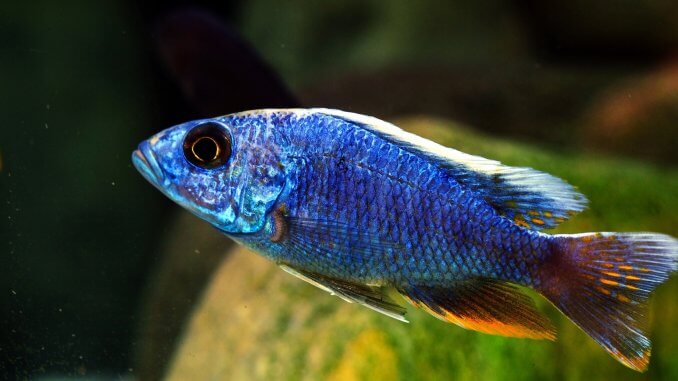
African cichlids are a group of freshwater fish belonging to the cichlid family. African cichlids are found in a variety of vibrant colors and are some of the cheapest colorful freshwater fish available to buy.
There are several types of African cichlids to choose from, including peacock cichlids, red zebra cichlids, bumblebee cichlids, blue cichlids, and kribensis cichlids.
Although African cichlids look beautiful, the fish are aggressive and territorial, and some species of African cichlids aren’t suitable for beginner fishkeepers.
TABLE OF CONTENTS
African Cichlid Facts & Overview
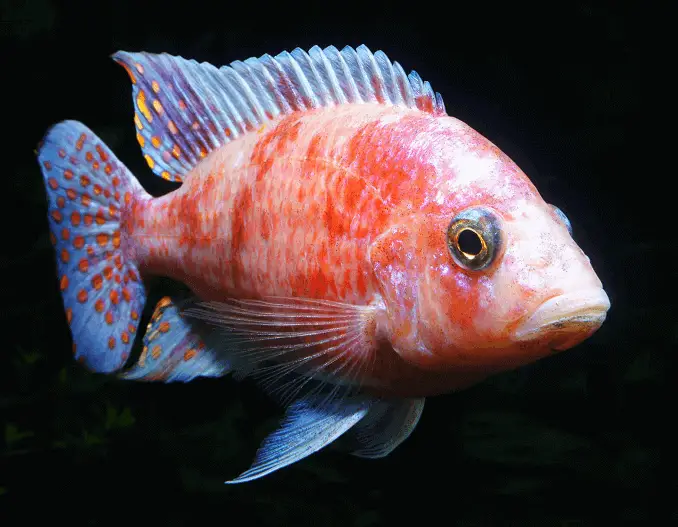
| Scientific name: | Pseudotropheus sp. |
| Common names: | African cichlid |
| Distribution: | East Africa |
| Size: | 2–12 inches |
| Life expectancy: | 6–10 years |
| Color: | Various colors including blue, yellow, pink, green, red, and purple, with spots or stripes |
| Diet: | Carnivore |
| Temperament: | Aggressive |
| Minimum tank size: | 30 gallons |
| Temperature: | 75–85°F (24–29°C) |
| pH: | 7.8–8.6 |
| Hardness: | 12–30 dGH |
| Care level: | Moderate |
| Breeding: | Egg layer or mouthbrooder, depending on the type of African cichlid |
Origin
African cichlids are a category of cichlids that inhabit three African lakes: Lake Malawi, Lake Tanganyika, and Lake Victoria.
These natural habitats have warm, clear waters, sandy substrates, lots of vegetation, and a high density of freshwater fish. Most African cichlids live in the shallows of their habitats, where they scavenge for food in the sand.
Adult Size & Lifespan
Fully-grown African cichlids reach 2 to 12 inches long, depending on the type of African cichlid. The longest African cichlids are big mouth haps, which grow up to 12 inches. Multies are the smallest African cichlid species, reaching two inches when fully grown.
The average lifespan of African cichlids is between six and 10 years.
Availability
African cichlids are widely available, and most stores sell several types and color variations of the fish. You can find African cichlids in local aquarium stores and online.
The typical cost of an African cichlid is $6 to $30, depending on how rare and unique the species is. Some of the online stores selling African cichlids are:
- LiveAquaria, which sells more than 30 African cichlid species, including red zebra cichlids, blue peacock cichlids, and frontosa cichlids.
- Aquatic Arts, which also sells more than 30 African cichlid types, including African fire cichlids, lemon cichlids, and black diamond cichlids.
Appearance & Behavior
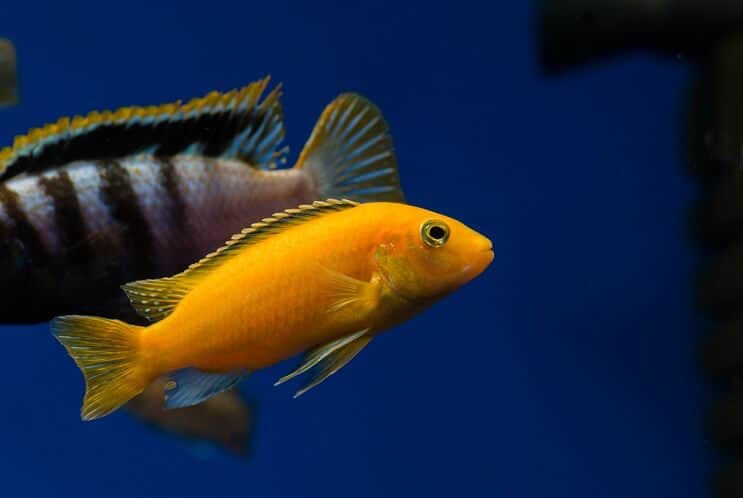
African cichlids are strikingly beautiful fish that are found in all the colors of the rainbow. These fish are active and sociable, with aggressive and territorial natures.
Colors, Patterns, Fins, and Sex Differences
African cichlids are a diverse fish group, available in a variety of sizes, colors, patterns, and fin styles. Most African cichlids are torpedo shaped, with flat, rounded fins and curved triangular tails.
The most common types of African cichlid, and their appearances, are listed below:
- Peacock cichlids: Bright yellow, red, blue, gold, or purple bodies.
- Maingano cichlids: Blue bodies with a horizontal black stripe and black fringed fins.
- Zebra cichlids: Stripy black and white with several color morphs, including blue, orange, red, and yellow.
- Frontosa cichlids: Light blue, whitish, or gray bodies with five or more black vertical stripes.
- Electric blue cichlids: Vibrant blue, iridescent bodies with paler heads than bodies.
- Electric yellow cichlids: Bright yellow coloration with whitish-yellow bellies.
- Demasoni cichlids: Dark blue bodies with black and light blue vertical stripes.
- Bumblebee cichlids: Elongated yellow bodies with black vertical stripes that resemble a bumblebee.
- Kribensis cichlids: Slim bodies in a variety of color morphs including red, yellow, green, silver, and blue.
- Buffalo head cichlids: Prominent foreheads and camouflage bodies, including black, blue, green, and gray.
- Giraffe cichlids: Blue heads with golden yellow bodies and brown giraffe-like splotches.
- Mbuna cichlids: Blue, yellow, or orange bodies with horizontal black stripes on the head and vertical black stripes on the body.
The majority of African cichlids have albino variations, with pinkish-white or yellowish-white bodies and red eyes.
Male African cichlids are bolder and brighter than females, especially during breeding season. Females have rounder bellies than males when viewed from above. African cichlids become duller than usual when exposed to poor water conditions, including high ammonia and nitrate levels.
Typical Behavior
African cichlids exhibit territorial behaviors like chasing and nipping, especially when housed in a crowded tank. African cichlids are active and require plenty of swimming space, as well as lots of cavities and hiding places to claim as their territories.
As diurnal fish, African cichlids are more active in the day than the night and swim quickly around the bottom and mid-sections of the tank. African cichlids are a busy species, spending their waking hours scavenging the substrate for food.
African Cichlid Care & Tank Requirements
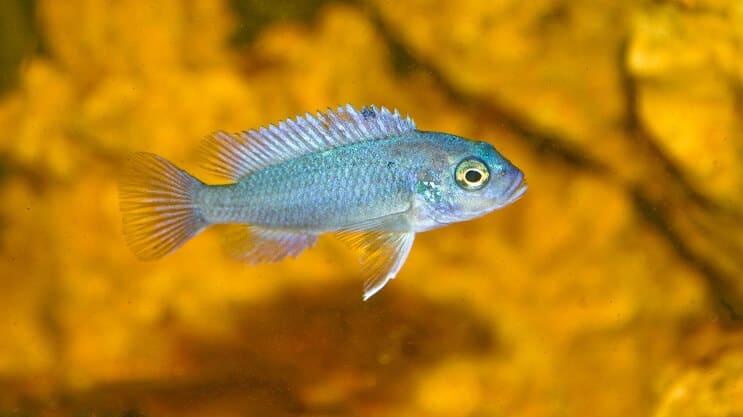
Caring for African cichlids is a moderately difficult task. Although African cichlids are hardy, ensuring that the tank setup is adequate for preventing stress and territorial behavior can be tricky.
African cichlids require a tropical freshwater tank that mimics their natural habitat, and these fish should be fed a largely carnivorous diet.
Habitat and Tank Requirements
In the wild, African cichlids typically live in the warm, tropical waters of lakes in Africa. These lakes have sandy substrates with lots of open swimming space, small rocks, and underwater vegetation.
Set up an African cichlid’s tank to closely replicate the fish’s habitat in the wild, with warm water, hardy plants, and hollow tank decorations.
African cichlids require a tank of at least 30 gallons and an extra five gallons of water per additional fish. Small African cichlids that are two or three inches long require a minimum tank size of 20 gallons. When buying baby African cichlids, remember that the fish will grow to double or triple their original size, and the tank should accommodate a fully-grown cichlid.
Substrate & Decorations
Most African cichlids enjoy open water and rocky substrates, so both of these elements should be provided in the tank. Small African cichlids enjoy exploring gaps and hideaways between rocks.
Use aquarium glue to stick rock piles together to ensure rocks are secure and can’t fall onto the fish. Use a soft, fine-grain sand substrate to allow African cichlids to search for food without the risk of injury.
Add furniture, plants, and caves to the aquarium to provide hiding places and territorial spots for African cichlids. The best plants for an African cichlid tank are deep-rooted plants like hornwort, Java moss, anubias, and anacharis.
Tank Conditions
The ideal tank conditions for African cichlids are:
| Water type: | Moderately hard, tropical freshwater |
| Tank size: | Minimum 30 gallons, plus 5 gallons per extra fish |
| Water temperature: | 75–85°F |
| Substrate: | Fine, soft sand |
| Tank setup: | Plants, rocks, caves, hollow decorations |
| Acidity: | 7.8–8.6 pH |
| Water hardness: | 12–30 dGH |
| Filter: | Yes, to keep the tank clean and reduce nitrates |
| Pump: | Not essential – African cichlids don’t require a strong current |
| Bubbler: | No, African cichlids don’t need additional oxygen |
| Lighting: | Yes, standard aquarium lighting can be used to encourage plant growth and highlight the fish’s beautiful colors |
| Water heater: | Yes, to maintain a warm, tropical water temperature |
There are two priorities when looking after African cichlids: keeping the water clean and nitrate-free, and ensuring that the fish have enough space to claim their own territories. Adhering to these priorities will prevent disease, aggression, and stress in the tank.
Disease
There are several diseases that affect African cichlids:
Cotton Wool Disease
Cotton wool disease is caused by a type of bacteria called flavobacteria. Fish with cotton wool disease have a pale, raised patch on their bodies and frayed, milky fins. Cotton wool disease causes fish to lose their appetites and appear lethargic.
Treat cotton wool disease by isolating the affected fish in a separate tank and adding an antibiotic prescribed by your veterinarian to the water. Use an air stone in the tank to provide additional oxygen if the fish’s gills are infected.
Malawi Bloat
Malawi bloat, or dropsy, is a symptom of bacterial or parasitic infections caused by stress or poor water conditions. Fish with Malawi bloat experience a buildup of fluid inside their bodies, resulting in swollen eyes and a swollen abdomen, scales that point outward from the body, and difficulty swimming.
Treat Malawi bloat by quarantining the fish in a separate tank and adding antibiotic or antibacterial treatment to the water.
Ich
Ich, or white spot disease, is caused by a parasite that produces white, salt-like spots on the fish. Lethargy, flashing (rubbing against rough surfaces) and a lack of appetite are common symptoms of ich.
Treat ich by quarantining the affected fish in a separate tank and adding one tablespoon of salt per two gallons of water in the tank. Alongside treatment, increase the water temperature in the quarantine tank by two or three degrees to speed up the parasite’s life cycle.
Tank Mates
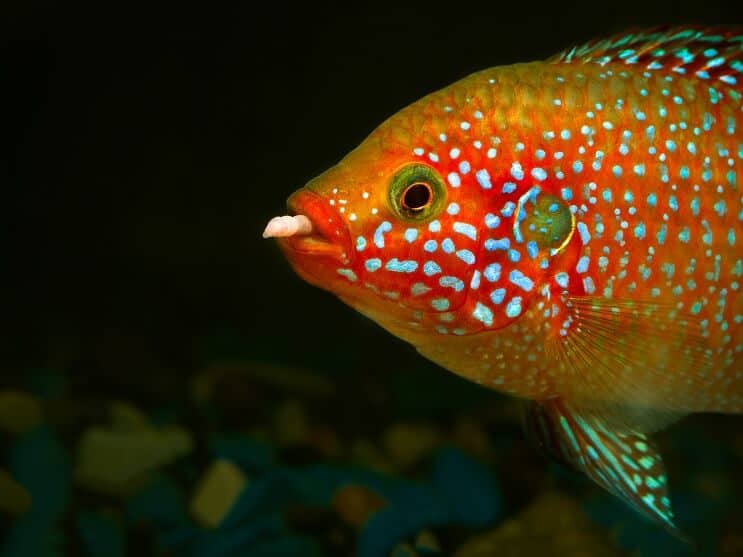
African cichlids are territorial fish that attack most other fish that swim in open waters. House African cichlids with confident, fast-swimming fish that occupy other parts of the tank and stay away from African cichlid territory.
Don’t house African cichlids with shy, small fish that are prone to bullying by the large, aggressive African cichlid species. Don’t add shrimp or other invertebrates to the tank, as the African cichlid will view them as food.
Great tank mates for African cichlids include:
- Other, similarly-sized African cichlids
- African catfish
- Plecos
- Red tail sharks
- Rainbow sharks
- Zebra loaches
- Giant danios
Diet and Feeding
In the wild, African cichlids eat a largely carnivorous diet, although the fish are opportunistic eaters. They eat whatever they come across, including plant matter, insects, and small fish.
Some African cichlid species are insectivores, and live from a diet of mostly insects. A few African cichlid species, such as mbuna cichlids, are herbivores. Read up on the specific African cichlid you intend to buy and tailor your feeding to suit the fish’s diet.
Feed all African cichlids high quality fish flakes, which give the fish several important nutrients that support the fish’s health. Supplement this diet with algae wafers, small feeder fish, insects, raw green vegetables, and bloodworms, depending on the African cichlid species.
Buy food that sinks to the bottom of the tank, because African cichlids enjoy sifting through the substrate for their food. Feed African cichlids three or four times per day, providing enough food at each feeding for them to eat within two minutes.
Breeding
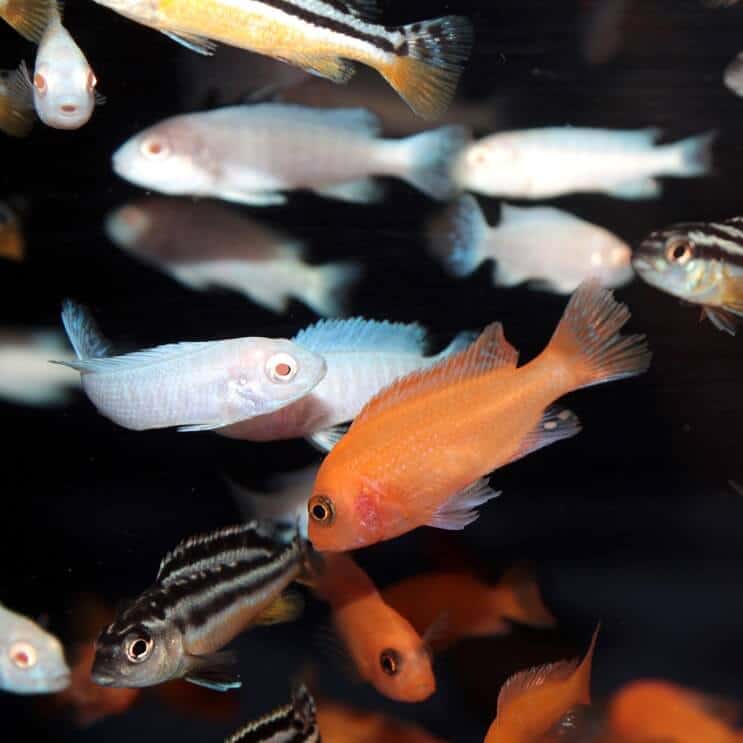
Many species of the African cichlid can be bred in captivity. Most African cichlids reach maturity at about nine months old.
Some African cichlids lay their eggs in caves, then guard the eggs until they hatch, while other African cichlids are mouthbrooders, meaning that the females hold the fertilized eggs in their mouths until the eggs are ready to hatch.
How to Breed African Cichlids
- Set up a separate breeding tank and decorate the tank with a sandy substrate and plenty of caves. Increase the temperature of the tank to 85°F to encourage breeding.
- Choose a healthy, mature male and female African cichlid and place both fish in the breeding tank. Feed the fish a high-protein diet of bloodworms to condition the fish for breeding.
- The male will display a courting ritual to attract the female. This ritual usually involves specific movements and a display of colors.
- If the female is interested, she will approach the male and the pair will breed inside a cave.
- If the female isn’t interested, she will avoid the male. Return the female to the home tank and add a different female to the breeding tank if the female shows no interest after one week.
- After breeding, the female will lay eggs in the substrate or carry the eggs in her mouth. Eggs hatch within 21 days.
- Most African cichlid species take care of their fry for the fry’s first two weeks of life. If you notice the parents eating the fry, remove the parents from the tank and return them to the home tank.
- Feed the fry liquid or powdered fry food or newly hatched brine shrimp for the first week, then move onto mashed pellet food until the fish reach adult size, within six months.
- Once the fry are big enough to be housed with adult fish, move them into a community tank.
Should You Get an African Cichlid for Your Aquarium?
African cichlids are a colorful, diverse, affordable group of cichlids. If you’re looking for beautiful fish to add to your aquarium, there are plenty of African cichlids to choose from.
You should consider getting an African cichlid for your tank if the tank has plenty of open swimming space and hiding spots for the fish to explore. Don’t get African cichlids if your tank houses small, peaceful fish species that could be bullied or eaten by African cichlids.
For an experienced fishkeeper, the African cichlid is an enjoyable fish to look after. African cichlids are active, entertaining fish that brighten up any tank.

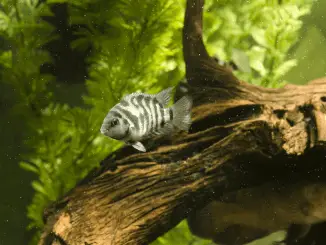
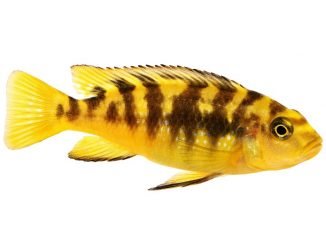
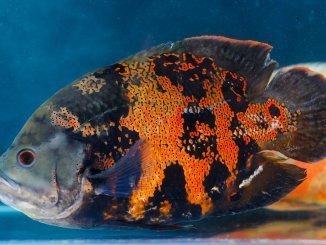
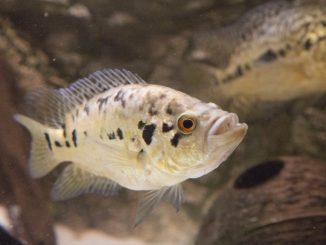
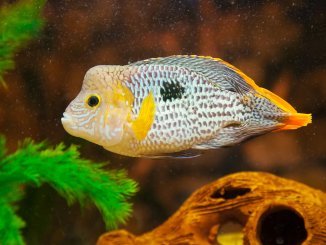
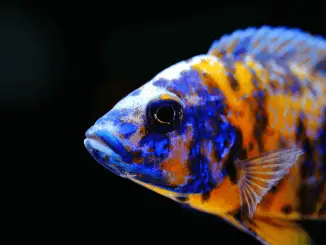
Thank you. Only a couple things I wasn’t already aware of. Like the size ranges and suitable tank mates. Like to hear more possible tank mates tho. Mine are convicts. Biggest one is ( by eye ) 4¼ in and growing. Birthday. Lol. Her mate was Fred. Had to breeding’s. Turned 2 fish into 30 pretty quick. Lol. Now I’m onto twp tanks. 60 and a 29 soon to be a 55. Have the tank gotta build a stand. ( Commercial stands are simply a desaster waiting to happen)
Can cichilds Have snails in the aquarium to keep it clean or what would you recommend because they don’t keep it clean with Alage what could I put in there????
Hi Charlotte, Bristlenose’s make great tank makes for African Cichlids, and are also excellent algae eaters. Thanks, Robert
To keep snails with cichlids you need numbers, not size. The smaller the better. Get plenty of them, as many will become a snack. Dont get too many though as they will multiply at an alarming rate. You can often get snails from pondkeepers because they are a nuisance and overpopulate ponds.
I began more than 20 years ago with cobalt zebras. I still love keeping the fish from Malawi though I have read and studied all of the others. This time around I began with different varieties of the zebras: orange, blue, blotched; and two melanochromis johanni – about 6-8 fish altogether. The johannni took off — I have about a dozen or more. The zebras I totally expected to breed and they have inter-bred which as an amateur fish keeper intrigues me with the different colors and patterns. Just to add to your excellent advice: begin with the largest aquarium you can afford; use pebbles for substrate (which they still move but not as easily); the best power filter you can get (cichilds are dirty and their size increases the waste); and rocks and Java Fern provide plenty of hiding spaces. With as many fish as I have now, I have to clean the 75 gallon aquarium once a week, but the fish provide a beautiful display of aquatic nature. Great hobby!
Thanks for sharing your experiences with us Ron. I’d love to see pictures of the zebras you’ve bred! Robert
I have been planning the set up of an aquarium at home (my first aquarium) for some time now and, having considered at lots of different options, I feel I am getting close to making a decision. However, I have quite a few questions. If I could get some advice, it would be really appreciated. Thanks in advance.
1. I am looking at a Flex Roma 125L (33 gallons) 80Wx35Dx50H. Any opinions on this tank/size/brand?
2. PLAN A: I am interested in keeping some cichlids. In particular yellow labs/African cichlids as they seem to be the easiest. And they are really colourful. Any thoughts?
3. How many yellow labs could I sensibly keep in the above tank?
PLAN B: Another consideration could be to mix them with electric blue cichlids or cobalt blue zebra cichlids. I understand these are both a little more difficult to keep. Any thoughts? If yes, how would you mix them with the yellow labs? 50:50? Mostly lemon labs and 2/3 blue cichlids?
4. I understand sand and rocks are the most natural habitat for these fish. What’s the thought on plants? Are they necessary?
I’m a fan of quite minimalist aquariums, so would probably choose to not put in plants if I could – or put in something small. What about an easily manageable moss?
5. In terms of maintenance, I’m assuming a water change of about 25% every 2 weeks. I assume as they are larger fish, they will make more waste, so I’d need to “hoover” the bottom too. Any advice on this area, would be really helpful.
Hi Neil, thanks for your question. It’s nice to see a beginner putting so much thought into setting up an aquarium. We recommend that Cichlids are only kept by people with some experience in the hobby. Have you considered keeping any other fish first? Thanks, Robert
Yes, you will need plants. Since cichlids are aggressive they will need a place to hide. Artificial plants should work. I guess you could Maybe do without plants if you have a ton of hiding spots in the rocks
how long will a mated pair of African cichlids raise their young? I had a pair raising them in a 125 Community tank and it seems like one of the mates has left. the male I believe is raising the young Now by his self
Hi,
im pretty keen to breeding fish and am about to buy a tank for that pourpose, do you have any recommendations for breeding the african cichlid? Thankyou
I have had yellow labs for 15 years in my tank. The original 3 bred several years ago and I traded some in for a store credit. Accidently traded the female in the scoop up. All was fine with few I kept except now all of a sudden I am loosing fish. Doing same care as always. Is it just they are likely just old now? Only two smaller fish from original fry 2nd bred group and it is larger that are dying. The original male (yes over 15 years old) was the last to succumb. Just read they only live 8 years in captivity….. then why did mine live so long and why now dying?
I have 125 Malawi cichlid tank. Fine gravel substrate – eco-complete, tank was previously planted. Adult male bumblebee, red zebra approaching 6” size. No clue how many are in there – rock scaped and tons of hiding places – and they keep making more. At least 30 – 4 large, 5-6 medium, 15 small, at least 20 very young small. 1 8” feather cat, 2 6” plecos (holdovers). The only way to get them out would be to dismantle the whole thing. Currently training them to swim into a net so I can catch overstressed girls when necessary.
So – do I let them continue to breed and sort out their own crowding and karma or should I take some action? Water quality very good, almost no aggression.
Hi can someone help please my malawi fish is loosing its skin its happened to 2 fish nobody can tell me why.my email address is [email protected]